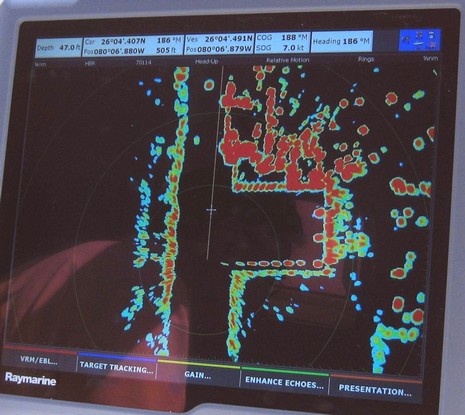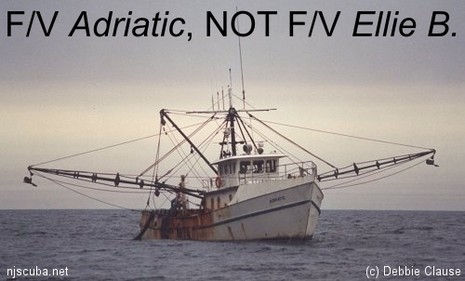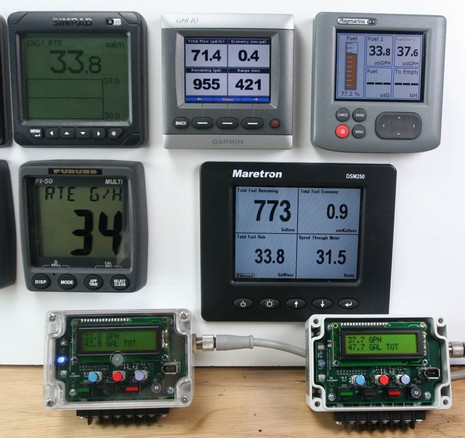Raymarine HD Radar, crisp but not yet Super

So let’s see if I can show you why I called Raymarine’s new high def radar demo “stunning” last week. First take a peek at the 1:10,000 chart for the section of Ft. Lauderdale canal shown above at 1/2 mile radar range, understanding that we were in head-up mode going almost due South, putting what I’m told is a submarine pen to starboard. Now look at the bigger screen photo here, plus the wide angle photo below, taken a moment earlier through a starboard pilothouse window. Feeling the def? Note the complete lack of clutter around the boat, yet how close and sharply defined the round steel dolphins and low shore are. And would you be surprised that further ahead are a couple of tied-up freighters with small boats outboard and cranes on shore?
This crisp performance is coming from a 4 kW 48” plain HD scanner, the least of Ray’s new line. What Super HD in the same size can do—let alone 6’ 12 kW SHD models—I have no idea. But we were shown how neatly this unit can be used in dual range mode, with all settings on each range completely independent. Furuno’s new Ultra High Definition scanners offer the same dual range feature. But which is most def, Ultra or Super? I don’t know, but we do seem to be looking a new digitally-enhanced radar performance level, even if the rumored solid state technology hasn’t come to market yet. I’m hoping that Raymarine, Furuno, and whoever else has competitive HD radars shows them off on the water at the Miami Boat Show.














Wow! That’s really cool. This new G series is impressive stuff. I’m curious as to what SuperHD can do also.
Also wondering how the Navnet3 stuff will compare.
Ben,
I noticed that you have been doing a lot of right ups on the Raymarine stuff, but do not seem to mention Furuno. I just got back form the Ft Lauderdale Boat show, and the new Furuno Navnet 3D seems to blow the doors off the G series.
Any comments?
I am surely biased by my use of Raymarine C and E-series over the past 7 years, but I was very impressed with the G-series system at FLIBS last week. It is a shipping system (the components for my new system will be delivered this week to my installer), unlike the new Furuno system which seems less definite on delivery dates into next year. The 3D cartography draping display of the Furuno is interesting, but I doubt anyone will actually navigate and pilot using that display. The Super HD and HD radar from Raymarine is based on more signal processing improvements than automatic clutter reduction, which seems to be the main selling point of the Ultra system from Furuno, from their brochures and web site. Both systems have dual range radar display capability. We’ll see how it plays out, but my money is on the G-series suite.
No 18″ radome version sailboats can use ?
Is there a problem getting this into that form factor?
This is a good radar, but working with radar for 40 years, makes me a little critical to the article.
The sea clutter first.
As you see on the pichture, the sea is like a mirror. There shuld be no clutter at all normally for a good radar. Second, the first steel dolphins on starboard side is so supressed that it is hardly visible. This tells me that the seaclutter is very hard set to supress eccoes. So it is a good 4 feet scanner,4kW radar. The antenna spec is similar to Furuno´s 4 feet about 10 years ago.But they have learned to improve the receiver, and that bring this radar close to the best in the marked.
I was wondering the same thing as Ole. I have traveled that area often and the first dolphin is the largest and closest, yet has the smallest return.
And I have to disagree with Preston regarding the use of the 3D on the Furuno system. He probably did not have a demo, but I wouldn’t want to navigate any other way from what I saw. It is so simply to switch from 2D to 3D and you can even do routing and place waypoints while in 3D. On the G series you can not do that. The automatic transparency on the Sat photo’s gave a clear view of the channels without seeing phantom boats or wakes from when the satellite pass took the picture.
Ben,
I DON’T feel the High Definition that is supposed to be so great!
For example, why is there a yellow fuzzy border around most of the targets, including the rocky channel sea walls in the picture you shot? At that close range in flat water, all the actual returns should be booming solid RED!
I scrolled down your home page and checked the Furuno Navnet 3D Image. You say Furuno claims it was recorded data from Cape Cod Canal. While I can tell that image is in 3D, it doesn’t have the fuzzy borders around the targets and the targets even appear to be much further.
Even the one target ahead of the boat is only yellow. If it is a real target, why isn’t it red as well? It certainly looks large enough. I doubt whether that yellow target was a harmless pile of seaweed floating on the water.
Raymarine v Furuno => Tastes Great v Less Filling
It appears that there is a question as to what high definition radar is. We can, in fact, change the color threshold and gain settings to produce a saturated picture of mostly reds and few other colors. The resolution of the radar image would be grossly compromised (there is a color pallate called “bold” as well that automatically does this). While smaller targets may appear to be larger, you have reduced the radars ability to define and seperate details.
Please also understand that Mr. Ellison’s picture is but a snapshot of a dynamic system. The radar in this case was in completely auto (harbor) mode, no user intervention whatsoever, and optimized for high resolution and target detection. The 1st bouy mentioned in one of the comments is well under the minimum range spec of the radar, but will appear “rounder” as the processing develops the picture. We have done extensive sea trials in myriad conditions and found that due to the adaptive nature of the signal processing, we can operate in auto modes for the majority of conditions.
As far as receivers are concerned, the HD desing is nothing like any traditional IF amp that is currently utilized in the liesure boat market. We use a patented software in a proprietary DSP system that is completely digital after the antenna and front end. This allows a much enhanced ability of the radar to detect small and large targets alike, and even penetrate the noise floor to bring out weak targets.